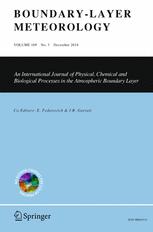Ver ítem
- xmlui.general.dspace_homeCentros Regionales y EEAsCentro Regional La Pampa - San LuisEEA AnguilArtículos científicosxmlui.ArtifactBrowser.ItemViewer.trail
- Inicio
- Centros Regionales y EEAs
- Centro Regional La Pampa - San Luis
- EEA Anguil
- Artículos científicos
- Ver ítem
PM10 emission, sandblasting efficiency and vertical entrainment during successive wind-erosion events: a wind-tunnel approach
Resumen
A wind-tunnel experiment was carried out to measure saltation and PM10 (particulate matter with a mean aerodynamic diameter less than 10
μ
μ
m) emission during three successive wind-erosion events on three different surfaces: an unpaved road and two different textured agricultural soils: a sandy loam and a loamy sand. The total horizontal mass transport (Q) and the PM10 emissions (E), were measured at two friction velocities: 0.2 and 0.3 m
[ver mas...]
A wind-tunnel experiment was carried out to measure saltation and PM10 (particulate matter with a mean aerodynamic diameter less than 10
μ
μ
m) emission during three successive wind-erosion events on three different surfaces: an unpaved road and two different textured agricultural soils: a sandy loam and a loamy sand. The total horizontal mass transport (Q) and the PM10 emissions (E), were measured at two friction velocities: 0.2 and 0.3 m
s
−1
s−1
. Results indicated that Q decreased rapidly in time over all surfaces, as the Q values were only 13–17 % of the amount registered during the first event. Similar trends were detected at both wind speeds. However, E values showed a lower relative decrease in the second wind-erosion event at the lower wind speed (25–51 % of the initial amounts) than at the higher wind speed (19–28 % of the initial amounts) over all surfaces. After the second wind-erosion event, both Q and E values remained constant except for the unpaved road, where both values decreased by 50 % in relation to the second event. Emission from the agricultural soils was sustained over successive wind-erosion events even when saltation was low. The sandblasting efficiency for PM10 emission was found to be higher for agricultural soils than for the unpaved road, and increased over wind-erosion events particularly in agricultural soils, and this was also reflected in the PM10 vertical entrainment. Results suggest that sandblasting efficiency and PM10 vertical distribution can change among wind-erosion events even for the same surface. The saltation fraction to PM10 content ratio can be a simple indicator of the general behaviour of an emitting surface during successive wind-erosion events.
[Cerrar]

Autor
Panebianco, Juan Esteban;
Mendez, Mariano Javier;
Buschiazzo, Daniel Eduardo;
Fuente
Boundary-Layer meteorology 161 (2) : 335–353. (November 2016)
Fecha
2016-11
Editorial
Springer
ISSN
0006-8314
1573-1472 (Online)
1573-1472 (Online)
Formato
pdf
Tipo de documento
artículo
Palabras Claves
Derechos de acceso
Restringido
 Excepto donde se diga explicitamente, este item se publica bajo la siguiente descripción: Creative Commons Attribution-NonCommercial-ShareAlike 2.5 Unported (CC BY-NC-SA 2.5)
Excepto donde se diga explicitamente, este item se publica bajo la siguiente descripción: Creative Commons Attribution-NonCommercial-ShareAlike 2.5 Unported (CC BY-NC-SA 2.5)

